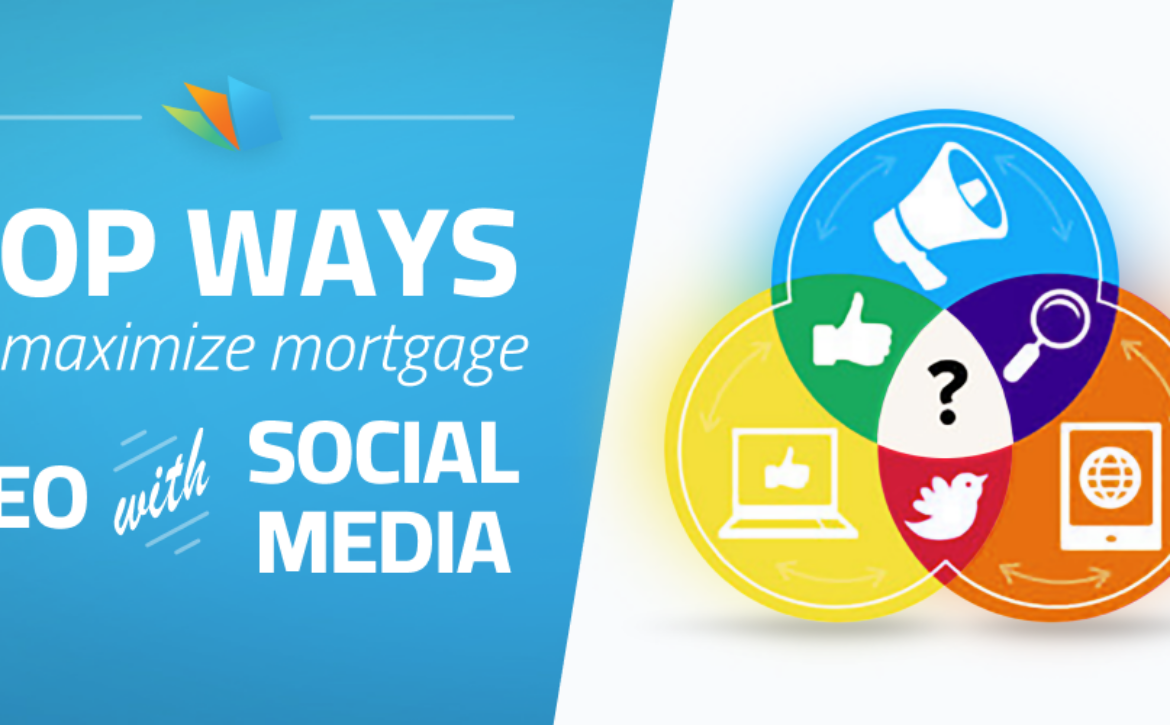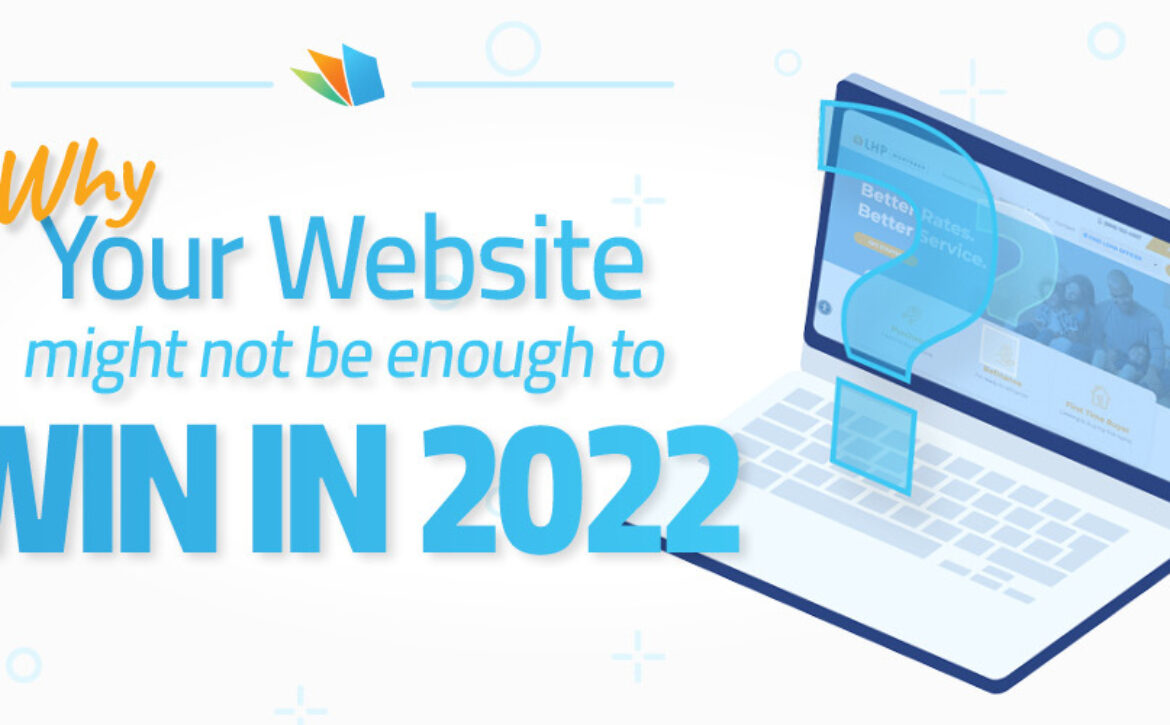10 Winning Strategies for Cutting Through the Noise and Standing Out in Mortgage Marketing
Securing a steady flow of top-tier leads for your pipeline is already a daunting task –but you knew this when you got into this industry. But when you factor in the current formidable market conditions with the already fierce competition, the pursuit of prospective borrowers seems like an even greater Herculean endeavor.
We get it.
That’s why we put together this list of the top 10 mortgage marketing strategies specifically chosen because of their proven effectiveness at helping you stand out from the crowd and uniquely position your services as one that goes above and beyond –making for a powerful and persuasive offer that organically feeds your pipeline with leads.
Make no mistake –while these strategies may appear straightforward (and several are quite manageable to implement), they possess the remarkable power to grant you a necessary competitive edge.
Drive Marketing Success –Demo Website Templates
Craft a Captivating Website: Your Secret to Converting Prospects
Your first impression is a primary determinant of whether a prospect will convert or not, and nowadays, these impressions happen online. Chances are, a prospect will land on your website as the final destination before reaching out to you, so you need to strategize a way to effectively make them fall in love (or at least be curious) right from the start.
Your site also needs to entice them to explore further; whether that means learning more about the company, consuming information, or starting the application process.
In other words, you don’t want to be ‘just another website’ that the prospect will likely forget. You need to create a memorable visitor experience.
Creating one doesn’t require a lot of time or know-how if you begin with high-converting website templates like one from LenderHomePage.
Speed Matters: Turbocharge Your Mortgage Website for More Leads
A fast-loading website propels visitors through the lead funnel. If your website is using a poor hosting service, has too many plugins, and/or has excessive lines of HTML, CSS, and Javascript code, your audience will abandon your website before it fully loads.
Search engines are very strict about this and are quick to push down your website to the bottom of results, so you want to make sure to keep user experience at the top of your priority list.
Mobile Optimization: Your Ticket to Mortgage Marketing Success
Mobile devices drive 62% of web traffic, making it absolutely essential that your site is mobile-friendly. Furthermore, Google favors mobile-friendly sites over sites that are not optimized for hand-held devices. No need to hire a developer to overhaul your site –LenderHomePage sites are already mobile-optimized.
Optimize Your Marketing with an AI-Driven Website
From Click to Client: The Art of Boosting Conversions on Your Website
To encourage prospects to share their information, you may need to offer something in exchange. For example, an ebook or a quick quote could be offered in exchange for their name and email address.
You also need to have a dedicated ‘Contact Us’ page to include more detailed information, such as directions to your office, map, address, email, and anything else that would encourage prospects to reach out.
Rise Above the Competition: Mortgage Marketing with Strategic Automation
While your competitors are mainly focusing on getting their name out there to get leads, you can do the same, but with a focus on the consumer’s value in working with you.
The combination of consumer-facing software + automation is a great way to delight your audience. In the mortgage environment, all your audience needs is a simple and fast homebuying experience where they are properly guided through the entire process. Mortgage software that automates the intake process also allows you to scale profits.
If you want to simplify the home-buying experience for your customers, look no further than Loanzify. Loanzify provides an easy-to-follow timeline to help guide clients every step of the way.
Some useful features include an interview-style questionnaire for the initial intake process, the ability to track all communications between your company and the client all in a single platform and mobile app, and much more.
Out-Perform the Competition – Get a Demo
There are also numerous branding features within the software, such as the ability to customize colors, add a logo and profile picture, etc., to better strengthen the relationship between your clients and your brand.
Timing is Everything: Navigating Mortgage Marketing in the Digital Age
Today’s audience is not easy to market to. With attention spans decreasing due to short-form content apps such as TikTok, you need to be smart about how you approach your target market. This doesn’t necessarily mean that you need to churn out content every day. In fact, the pressure to post daily content may reduce the quality of the content and make you feel burnt out.
Sure, there are benefits, such as the opportunity to put out various types of posts and see which ones your audience interacts with most. Posting daily can give you some good insights but does not always benefit you in the long run.
Instead, start noticing when your audience is most receptive. For example, many businesses like to send out newsletters on Fridays when the work day is not as busy, and everyone is getting ready for the weekend vs. on a busy Monday.
In the case of your target audience, which is potential homebuyers, notice changes in homebuying patterns and market accordingly. A good time to hit your audience with powerful and convincing messaging to buy a new home is when the market is good for buyers.
Solving the Mortgage Puzzle: Focus on Solutions, Not Just Loans
The only way your marketing messaging can resonate with your crowd is if you provide a solution to an existing problem they are experiencing. This message can be as simple as loans for homebuyers with poor credit, but oftentimes, prospects are looking for much more than that.
Here are some other pain points you can resolve for clients:
- Simple Application Process: This requires a shift in your way of thinking. Mortgage software, like an LOS, streamlines the application process, but it does so for the originator –not the borrower. So when considering how you can beat out your competition with your application process, meditate on what the borrower experiences with the application.
Once you’ve pinpointed the precise messaging about how you make applying for a loan stress-free and transparent, it should be clearly addressed in your marketing messaging.
- Personalized Guidance: If your messaging revolves around how you guide homebuyers along every step of the home-buying process, you’ll win hearts instantly. After all, it’s not easy for clients to navigate technology that potentially confuses them and sometimes, they need a human to explain the technicals, such as terms and requirements. Excellent, personalized support combined with easy-to-use technology is a powerful way to stand out above the noise.
On-Demand Demo – Click Here
Lights, Camera, Action! Leveraging Videos for Mortgage Marketing
Video content is dominating today’s world. We can see this with current social media trends, and how people view videos is presented quite clearly in these trends. For example, short-form video content is preferred over a 20-minute video explaining the same concept.
Next time you think about writing a whitepaper or other long-form content, ask yourself whether you can effectively communicate the same content in a video. If the video becomes too long, you can easily break it down into smaller digestible videos or even upload a crash course on YouTube.
Popular types of video content tell an intriguing story, are testimonials, informational or tutorial, or lighthearted for entertainment.
Know Your Competition: A Winning Strategy for Mortgage Professionals
Mega banks aren’t your only competition. Local lenders and originators are too, so it’s worth checking out what they’re up to –where they’re winning and losing.
You can see your competitors’ strongest and weakest points by reading online reviews. You can check out their social profiles and get content inspiration. You can also see what types of content they produce are getting the most views, which will give you an insight into the hottest topics in real estate.
A good strategy is viewing your competitors’ content and asking yourself how to make it 10x better.
SWOT Analysis: Your Blueprint for Mortgage Marketing Mastery
A SWOT analysis is a report you can create that lists your company’s strengths, weaknesses, opportunities, and threats. This helps you steer your marketing strategy to focus on growing your strengths, recognize your weaknesses so you can act accordingly, take advantage of opportunities, and become more aware of threats, whether they are in your control or not.
- Strengths: This involves a comprehensive evaluation of your unique selling points, such as specialized expertise, exceptional customer service, or a vast network of real estate referral partners. By understanding and highlighting these strengths, you can emphasize your competitive advantages and effectively communicate them to potential clients to set you apart from competitors.
- Weaknesses: Assess any areas where you may fall short, such as limited product offerings, inadequate technology infrastructure, or a lack of brand recognition. By acknowledging weaknesses, you can develop targeted strategies to address and overcome them, improve you overall service, and enhance your market position.
- Opportunities: This may include emerging market trends, changes in regulations, or new customer segments. By staying attuned to these opportunities, you can tailor your marketing strategies to capitalize on them. For example, if there is a growing demand for eco-friendly home improvement loans, a loan officer could position themselves as a specialist in this area.
- Threats: This may include increasing local competition, economic fluctuations, or evolving customer preferences. By addressing threats head-on, you can adapt your marketing strategies to remain resilient and competitive.
When You’re Ready To Take Your Lending Career to the Next Level –LenderHomePage
If you’re ready to take your mortgage business to new heights and see these strategies in action, we invite you to experience an on-demand demo to discover how we can empower your marketing efforts to gain a competitive edge and achieve greater success in your mortgage business.









